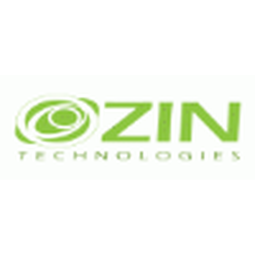Download PDF
API Integration

Technology Category
- Application Infrastructure & Middleware - Middleware, SDKs & Libraries
Applicable Industries
- Electronics
Applicable Functions
- Sales & Marketing
The Challenge
Inilex is a leader in providing mobile location based services has to perform operations on thousands of SIM cards each day. There are always new customers that needs their SIMs activated and some require suspension of services, and similarly some would want to have their services resumed. Having all these operations performed at their own end was a challenge for Inilex. They had to design a complete CRM and billing system to perform all these operations. And because of increasing number of customers, it had to be scalable enough as well.
The Customer
Inilex
About The Customer
Since its inception in 2003, Inilex has become a leading provider of affordable, intelligent, mobile location-based services that comprises of GPS tracking devices, application and management software. The company serves a number of industries with their
The Solution
When faced with the challenges, they discovered Global M2MConnectivity solution provider; Wyless which provides a unique SaaS platform Porthos. Porthos offers number of different APIs for users. They include restful APIs, both synchronous and Asynchronous.
Operational Impact
Quantitative Benefit
Related Case Studies.

Case Study
Remote Temperature Monitoring of Perishable Goods Saves Money
RMONI was facing temperature monitoring challenges in a cold chain business. A cold chain must be established and maintained to ensure goods have been properly refrigerated during every step of the process, making temperature monitoring a critical business function. Manual registration practice can be very costly, labor intensive and prone to mistakes.

Case Study
Cloud Solution for Energy Management Platform-Schneider Electric
Schneider Electric required a cloud solution for its energy management platform to manage high computational operations, which were essential for catering to client requirements. As the business involves storage and analysis of huge amounts of data, the company also needed a convenient and scalable storage solution to facilitate operations efficiently.

Case Study
Leveraging the IoT to Gain a Competitive Edge in International Competition
Many large manufacturers in and outside Japan are competing for larger market share in the same space, expecting a growing demand for projectors in the areas of entertainment, which requires glamor and strong visual performance as well as digital signage that can attract people’s attention. “It is becoming more and more difficult to differentiate ourselves with stand-alone hardware products,” says Kazuyuki Kitagawa, Director of Service & Support at Panasonic AVC Networks. “In order for Panasonic to grow market share and overall business, it is essential for us to develop solutions that deliver significant added value.” Panasonic believes projection failure and quality deterioration should never happen. This is what and has driven them to make their projectors IoT-enabled. More specifically, Panasonic has developed a system that collects data from projectors, visualizes detailed operational statuses, and predicts issues and address them before failure occurs. Their projectors are embedded with a variety of sensors that measure power supply, voltage, video input/ output signals, intake/exhaust air temperatures, cooling fan operations, and light bulb operating time. These sensors have been used to make the projector more intelligent, automatically suspending operation when the temperature rises excessively, and automatically switching light bulbs. Although this was a great first step, Panasonic projectors were still not equipped with any capability to send the data over a network.








